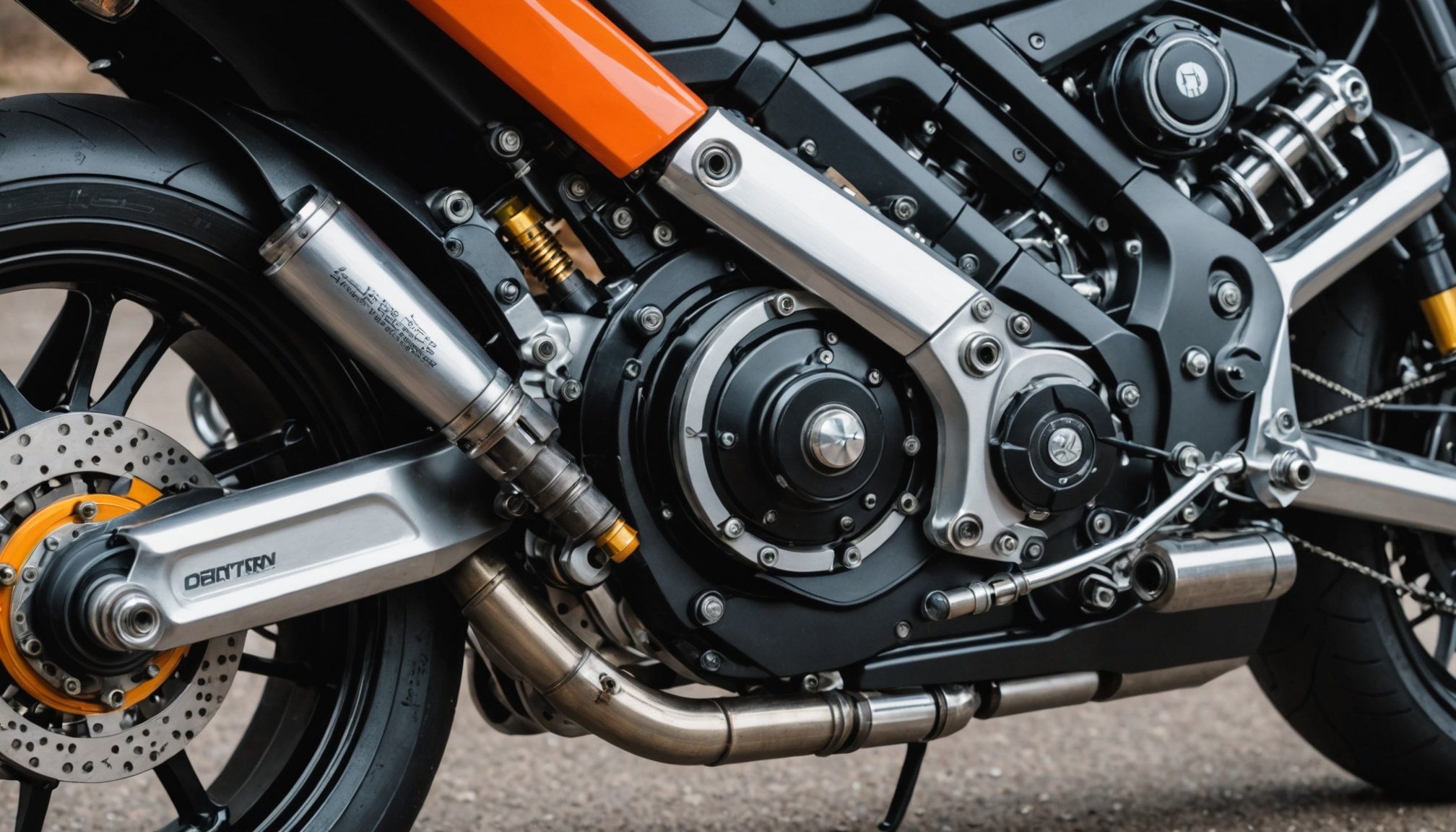Overview of Hydraulic Clutches
Navigating the delicate balance between precision and ease when handling a sports bike can transform the entire riding experience. A hydraulic clutch notably elevates this experience. Unlike traditional cable clutches, hydraulic systems provide a smoother and more consistent feel. This is particularly advantageous when managing a sports bike’s performance. The hydraulic mechanism adjusts automatically for wear, which means the clutch lever maintains a constant pressure and feel over time. This not only enhances comfort but also boosts the performance by delivering a more reliable and predictable engagement.
The benefits of hydraulic systems become especially apparent during urban riding. In dense UK traffic, the frequent stop-and-go conditions require a clutch that’s both responsive and effortless to operate. This is where a hydraulic clutch shines, reducing both fatigue and the risk of hand strain during extended rides. This ensures that riders can adapt smoothly to the often challenging traffic conditions without compromising on control or safety.
Also to discover : Comprehensive handbook for installing dash cameras on sport bikes: ensuring legal compliance for uk road travel
Moreover, the pressure needed to operate a hydraulic clutch remains consistent, making it easier to modulate the clutch in varied conditions. This consistency offers a significant enhancement for riders who are looking to maintain excellent control over their bike’s power delivery.
Necessary Tools and Materials
When considering a hydraulic clutch installation, ensuring you have the right tools and materials is crucial. The process can be complex, requiring precision and specific equipment. Below is a comprehensive guide to what you will need.
This might interest you : Comprehensive handbook for installing dash cameras on sport bikes: ensuring legal compliance for uk road travel
Essential Tools Required for Installation
-
Ratchet and Socket Set: An indispensable tool for loosening and tightening bolts, allowing for smooth disassembly and reassembly.
-
Torque Wrench: Ensures bolts are tightened to the manufacturer’s specifications, preventing under-tightening or over-tightening which could affect clutch performance.
-
Hydraulic Fluid: The lifeblood of the system, essential for maintaining hydraulic pressure.
Hydraulic Clutch Kit Components
A well-rounded clutch kit should include:
- Clutch Disc: Transfers power from the engine to the transmission.
- Pressure Plate: Maintains pressure on the clutch disc, crucial for engagement.
- Hydraulic Release Bearing: Facilitates smooth disengagement of the clutch.
Recommended Brands and Products
For reliable installation, opting for renowned brands is advisable. Consider:
- Exedy for comprehensive kits known for durability.
- Sachs: Offers robust components that enhance performance.
By investing in quality installation materials, you ensure a seamless and efficient installation process, reducing the potential for future issues.
Step-by-Step Installation Guide
Understanding how to install a hydraulic clutch on your sports bike can transform your riding experience. Follow this step-by-step process to ensure a smooth and efficient installation.
Preparing Your Sports Bike
Before beginning the installation, ensure your sports bike is on a stable surface. Remove existing clutch components carefully. Have all necessary tools and the hydraulic clutch kit ready. Familiarising yourself with the bike’s current clutch setup can help anticipate challenges in the installation process.
Installing the Hydraulic Clutch Components
Begin by fitting the master cylinder onto the handlebars, ensuring it’s secure. Route the hydraulic line to avoid interference with the bike’s frame. Attach the slave cylinder to the engine casing. Connecting the line to the slave cylinder requires precision; ensure all connections are tight to prevent leaks. Follow the manufacturer’s instructions for specific torque settings to avoid over-tightening.
Final Adjustments and Checks
Once installation is complete, bleed the system to remove air bubbles, enhancing clutch responsiveness. Adjust the clutch lever to your preference for optimal comfort. Double-check all connections, ensuring they’re secure. Perform a test run, prioritising safety. Listen for unusual noises, which might indicate improper installation. Fine-tune any adjustments for a smoother ride.
Troubleshooting Common Issues
Encountering hydraulic clutch problems can be frustrating, but understanding the root of these issues can lead to effective solutions. First, identify any installation errors—these can often be the source of many performance issues. Common mistakes include incorrect alignment or improper securing of components, which can lead to inefficiency or even failure of the clutch system.
If you experience issues such as slipping or inconsistent engagement, try these troubleshooting tips:
- Ensure proper fluid levels: Low hydraulic fluid can degrade performance. Regularly check and refill to the recommended level.
- Inspect for leaks: Any sign of fluid leakage could point to a faulty seal or damaged component. Replace the parts as necessary.
- Adjust the release mechanism: Improper adjustment can affect the clutch’s performance.
Long-term maintenance is crucial for uninterrupted operation. Regular inspection can prevent most performance issues. Make it a habit to:
- Clean debris from the clutch area.
- Replace hydraulic fluid as part of your regular vehicle maintenance schedule.
- Check for wear and tear in components like the master and slave cylinders.
By adopting these practices, you can significantly enhance the lifespan of your hydraulic clutch and ensure optimal performance.
Safety Precautions During Installation
When working on a motorcycle, employing general safety tips is fundamental to ensure both your safety and the bike’s integrity. This includes having a clean workspace to avoid tripping hazards and ensuring all tools are readily available before commencing work. Additionally, it’s essential to consider safe lifting practices to prevent any injuries.
Specifically, during hydraulic clutch installs, there are unique installation precautions to observe. Ensuring the motorcycle is securely mounted, ideally on a stand, prevents unwanted movement. Always disconnect the battery to avoid accidental shorts. Careful handling of hydraulic components, using the correct tools, is vital to prevent any system damage.
The use of personal protective equipment (PPE) is an often overlooked but critical aspect of bike maintenance safety. Wearing gloves protects your hands from oils and sharp components, while safety goggles shield your eyes from debris. Steel-toed boots are beneficial to protect your feet from heavy parts that might accidentally drop.
Sticking to these safety precautions during installation aids in mitigating risks and preserving the long-term functionality of the motorcycle. With the right approach, you can ensure a safer working environment and a smooth installation process.
Advantages of Hydraulic Clutches in Urban Riding
In bustling urban environments, the efficiency of a hydraulic clutch becomes evident. Riders experience a notable enhancement in control and comfort when faced with the challenges of stop-and-go traffic. Unlike traditional clutches, hydraulic systems offer smoother operation and reduce the force required to engage the clutch, which is incredibly advantageous during frequent stops.
One significant benefit of hydraulic clutches is their precise modulation. In urban settings, where abrupt stops are common, the ease of leveraging a hydraulic clutch allows for gradual engagement, providing a seamless and progressive feel. This smoothness not only enhances overall riding comfort but minimizes hand fatigue, a critical factor for daily commuters.
Moreover, hydraulic clutches offer long-term benefits for those navigating congested areas regularly. By ensuring consistent performance over time, these clutches reduce wear and tear, increasing vehicle longevity and reliability. Riders can therefore rely on them for prolonged periods without encountering degradation in clutch feel or efficiency.
Ultimately, choosing a bike with a hydraulic clutch system can significantly improve the urban riding experience, merging enhanced comfort with sustained control, thereby elevating the rider’s confidence and enjoyment amidst the hustle and bustle of city life.
UK Regulations and Recommendations
Navigating the UK motorcycle regulations can be challenging, especially when it comes to modifications such as installing a hydraulic clutch. While innovative, such modifications must comply with established standards to ensure road safety. To aid this process, understanding the UK’s Vehicle Certification Agency guidelines will be essential. These guidelines stipulate specific performance and safety standards every motorcycle, including modified ones, must meet.
When riding with a hydraulic clutch in UK traffic, certain practices can improve safety and comfort. Firstly, it’s crucial to ensure you’re familiar with the clutch system, practising in low-traffic areas before hitting the main roads. This provides a smoother transition into heavy traffic situations and enhances control under varied weather conditions.
Additionally, consulting local motorcycling clubs or forums can offer valuable riding tips tailored to city versus countryside conditions. These groups frequently provide workshops or meet-ups where you can gain hands-on advice and practical tips.
For more detailed information on UK-specific riding standards, organisations like the Department for Transport and local motorcycle safety courses can be wonderful resources. They offer extensive knowledge on maintaining compliance and adapting your driving practices for the UK’s unique road systems, ensuring not just legality but also safety on your journeys.











